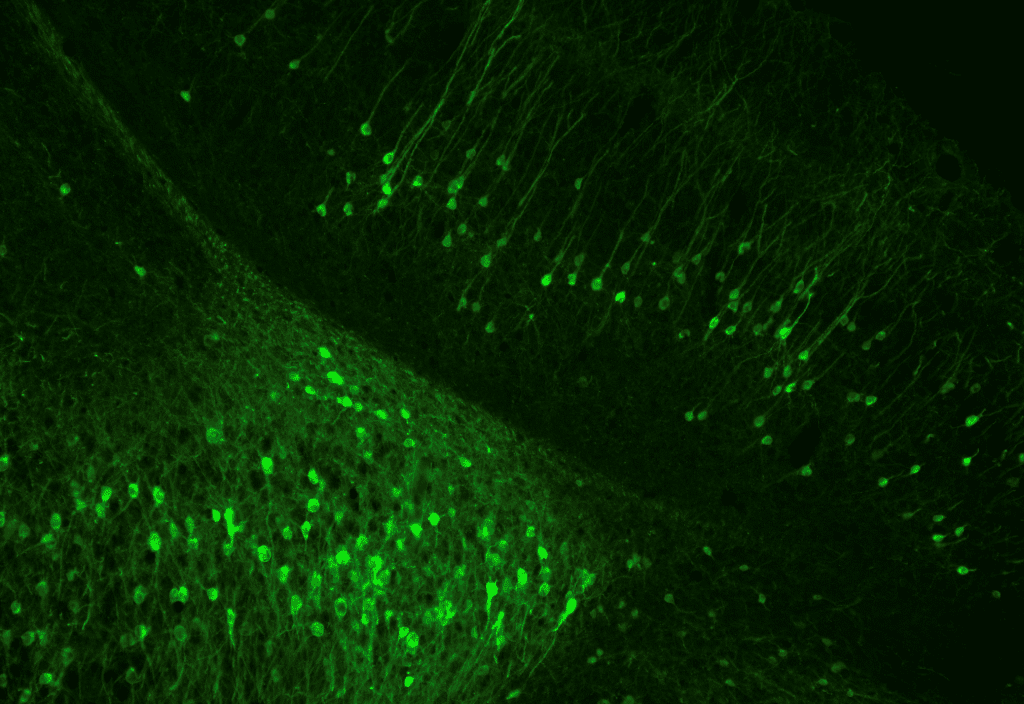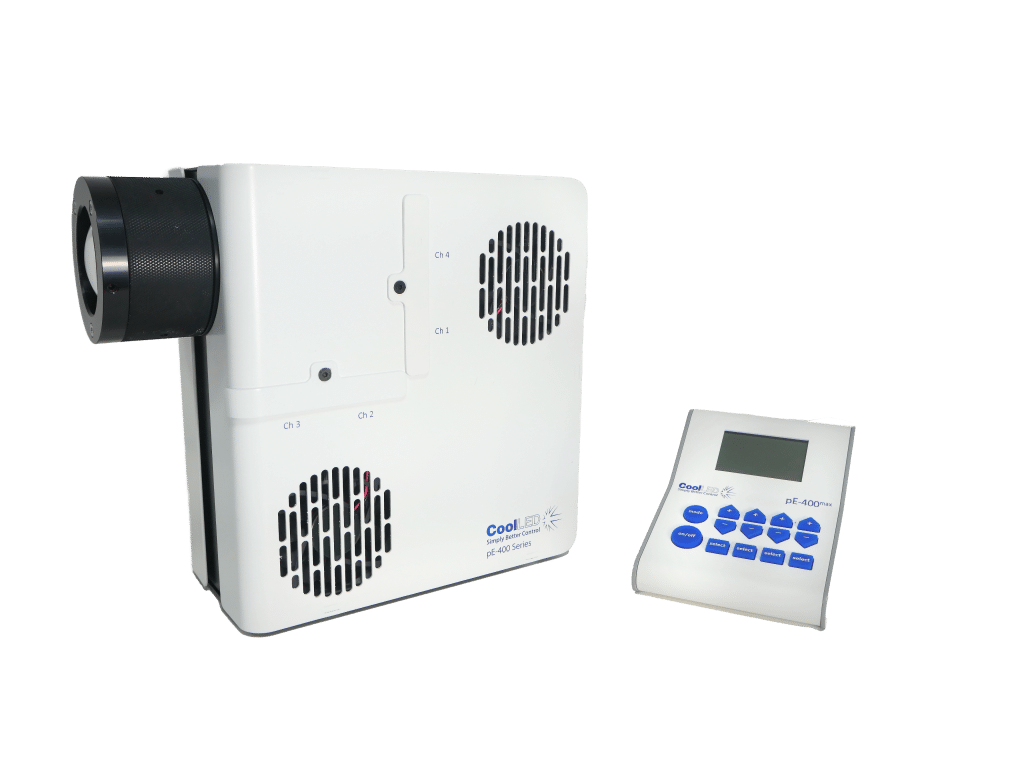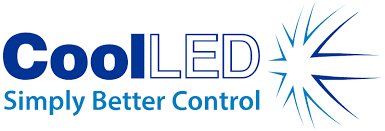Widefield Fluorescence Imaging: Controlling Four-Channel LED Illumination in Software
Sponsored by CoolLED, on 15 July 2025
In modern fluorescence microscopy, the relationship between hardware and software is critical for efficiency, precision, and throughput. Among modern LED illumination systems, the CoolLED pE-400max for everyday widefield fluorescence imaging stands out due to its seamless integration with leading imaging software environments, including µManager, Leica LAS X, Evident cellSens and Nikon NIS Elements.

These integrations offer a level of control and synchronisation that meets the demands of high-performance imaging workflows in both research and clinical laboratories, and particularly in multi-user facilities. For scientists engaged in live-cell imaging, ratiometric assays, or time-sensitive acquisition protocols, the ability to manage illumination through software control is indispensable.
Optimised for Routine to Advanced Fluorescence
The pE-400max is the most advanced Illumination System of the pE-400 Series, which is ideal for routine to more complex fluorescence microscopy applications. Four powerful LEDs can be individually controlled via software, TTL, Lightbridge GUI and manual control pod for everyday fluorescence microscopy and optogenetics applications where control is crucial. And these four LEDs offer broad spectral coverage spanning 365-635 nm for use with fluorophores ranging from DAPI through YFP to Cy5.

Advantages of Software Control
Microscopists utilising the pE-400max in imaging software benefit from:
- Full four-channel software control via USB or TTL, allowing integration into advanced acquisition workflows, including time-lapse, Z-stacks, and multi-position experiments.
- Digital intensity modulation and channel selection, for granular control to balance four channels individually, which also eliminates the variability associated with manual operation.
- TTL synchronisation with camera, increasing temporal resolution to capture high-speed events. Moreover, time-lapse experiments can be extended thanks to minimised photobleaching, and phototoxicity of live cells is reduced which increases data accuracy.
- TTL synchronisation with other hardware components allows users to coordinate LED switching with external devices such as piezo stages or shutters, with minimal latency.
- Reproducible protocols, where illumination parameters are embedded within saved experiment configurations provides consistent inter-session or inter-user performance. The ability to capture, record and re-use exact acquisition parameters such as channels, intensities and timings is ideal for generating consistent, publication-quality data.
Application Support
Comprehensive documentation is available for integrating the pE-400max into a wide range of imaging platforms, and our technical support team or local CoolLED resellers are available to help optimise setups for your application. CoolLED also maintains a close relationship with microscope software developers to ensure long-term compatibility and support.
Conclusion: A Platform Built for Modern Imaging
Whether for routine imaging, or live-cell time-lapse, the combination of hardware capability and software integration makes the pE-400max a compelling choice for any laboratory seeking to enhance both performance and reproducibility.
For more information on the pE-400 Series and software integration resources, visit:
www.coolled.com/products/pe-400max
www.coolled.com/support/imaging-software




 (No Ratings Yet)
(No Ratings Yet)